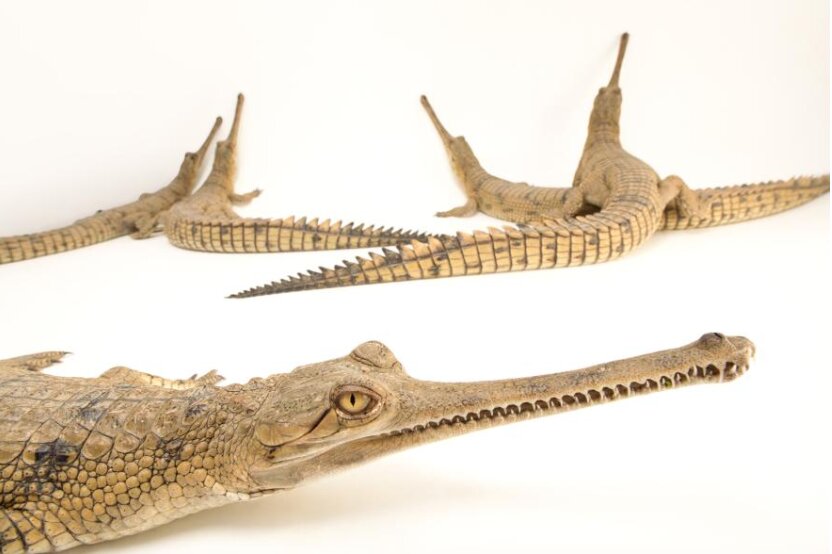Release of Gharials | 15 May 2020
Why in News
Recently Government of Uttar Pradesh has released Gharials (Gavialis gangeticus) in the Ghaghara river for the conservation and protection in natural habitat.
Key Points
- Natural Habitat: Fresh waters of the northern part of India.
- Gharials, sometimes called gavials, are a type of Asian crocodilian distinguished by their long, thin snouts which resembles a pot (ghara in Hindi).
- Significance: Population of Gharials are a good indicator of clean river water.
- Gharials are a type of Crocodilians that also includes crocodiles, alligators, caimans, etc. India has three species of Crocodilians namely:
- Gharial (Gavialis gangeticus): International Union for Conservation of Nature (IUCN)- Critically Endangered.
- Mugger crocodile (Crocodylus palustris): IUCN- Vulnerable
- Saltwater crocodile (Crocodylus porosus): IUCN- Least Concern
- In comparison to Crocodiles, Gharials are very shy and unharmful species.
- Primary Habitat: Chambal river
- The chambal originates at the Singar Chouri peak in the northern slopes of the Vindhya mountains (Indore, Madhya Pradesh).
- It joins the Yamuna River in Etawah District of UP.
- Tributaries: Banas, Kali Sindh, Parbati.
- The National Chambal Sanctuary is located along river Chambal on the tri-junction of Rajasthan, Madhya Pradesh and Uttar Pradesh. It is known for critically endangered gharials, the red-crowned roof turtle, and the endangered Ganges river dolphin.
- Secondary Habitat: Ghaghra and Gandak river, Girwa river (Katarniaghat Wildlife Sanctuary in Uttar Pradesh), the Ramganga river in Jim Corbett National Park and the Sone river.
- Status: Gharials are critically endangered in the International Union for Conservation of Nature Red List of Species.
- Listed under Schedule I of the Wild Life (Protection) Act, 1972.
- Listed on Appendix I of Convention on International Trade in Endangered Species of Wild Fauna and Flora (CITES).
- Conservation Efforts: Breeding Centres of Kukrail Gharial Rehabilitation Centre in Lucknow, Uttar Pradesh, National Chambal Sanctuary (Gharial Eco Park, Madhya Pradesh).
- Threats:
- Gharials prefer sandbanks as suitable habitats. Wild animals as well as humans often destroy their eggs.
- Increased river pollution, dam construction, massive-scale fishing operations and floods.
- Illegal sand mining and poaching.
Ghaghara River
- It acts as an important aquatic corridor for gharials in Uttar Pradesh.
- Its source is near Gurla Mandhata peak, south of Mansarovar in Tibet.
- It is known as the Karnaili in Western Nepal.
- It's important tributaries are the Sarda, the Sarju (Ayodhya is located on its bank) and the Rapti.
- The Ghaghara joins the Ganga a few kilometres downstream of Chhapra in Bihar.
- After reaching the plain area, its stream gets divided into many branches of which, Koriyab and Garwa are important.
- The river bed is sandy and sudden bends start occurring in the stream.
